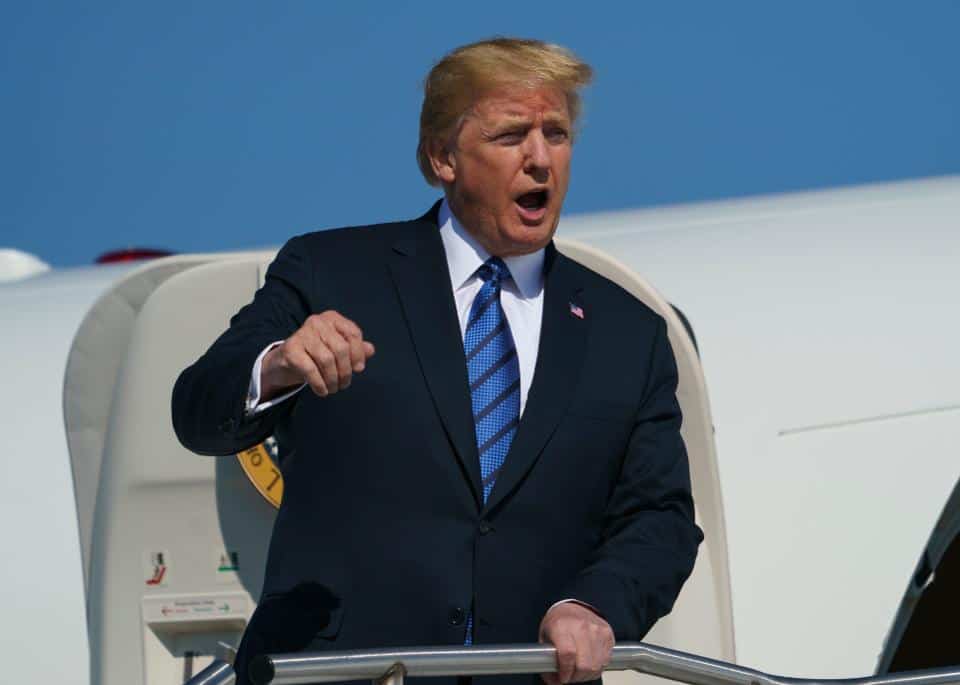
Many years before President Trump won the 2016 presidential election, he labeled China a country that manipulates the value of its currency to hurt the United States in trade.
“When will the US government finally classify China as a currency manipulator?” Trump tweeted in 2011. “China is robbing us blind and @BarackObama defends them.”
Like President Obama, when Trump became president, her backed down from that charge. In 2017, he told journalists that China was not a currency manipulator. But he was right back in 2011 and he’s right now.
The question is: what is the U.S. going to do about it?
First, a bit of background. The Chinese currency, called the renminbi, is what’s known as a policy currency. That means that unlike the U.S. dollar, which rises and falls in value in free market trading, the currency’s value against the dollar is set by the People’s Bank of China, an arm of the Chinese government.
While the PBOC has gradually tried to make the value of the renminbi more reflective of market forces, setting trading bands in which the renminbi is allowed to fluctuate every day, in the last analysis it is still under government control. Put another way, the value of the renminbi is manipulated by the government and always has been. It’s just that when Beijing was manipulating the value so that the renminbi appreciated against the dollar in the last few years, nobody in Washington complained.
What’s changed? For one thing, Trump has put new tariffs on $35 billion worth of Chinese exports. On Friday, he raised the stakes, telling CNBC that he was willing to hit all of China’s $505 billion exports to the U.S. with punitive tariffs.
The reason is that Trump is trying to force China to stop stealing intellectual property from U.S. companies, which it forces to form joint ventures with Chinese firms if they want to do business in China. That’s a blatant violation of World Trade Organization rules that Beijing agreed to when it joined the WTO in December, 2001.
It’s like a high stakes poker game. Each time Trump raises his bet by adding new tariffs, China responds with an equal amount of import duties on American goods. Both sides want the other to blink first. But here’s the tricky part: while the U.S. bought $505 billion of goods from China last year, the Chinese only bought $129 billion worth of U.S. goods. Meaning that Beijing will run out of imports to to tax long before Trump does.
So one strategem for the Chinese is to hit back in another, non-tariff way. Such as making their goods cheaper so that the Trump tariffs don’t make a difference. Enter the renminbi. China has allowed the currency to decline 7.6 percent against the dollar in just the last four months. That’s a huge drop, and almost negates Trump’s threatened 10 percent import tariffs on some Chinese products.
Indeed, Treasury Secretary Steven Mnunchin, usually quite dovish on China trade, said he was now concerned about the renminbi. “There’s no question that the weakening of the currency creates an unfair advantage for them,” Mnunchin told Reuters in Brazil on Friday.
Now that Trump claims China is indeed “taking away our big competitive edge,” Mnunchin said that the Treasury Department would consider whether to declare China formally as a currency manipulator when it publishes a report in October. But even if that happens, the penalty would be…tariffs on Chinese imports. It will be very hard to put tariffs on top of already existing tariffs.
Let’s face it, China is using currency manipulation as an arrow in its quiver. Trump was right all along. But now it may be too late to stop it.
Trump, meanwhile, also accused the European Union of using currency manipulation, but a different kettle of fish entirely. The European Central Bank has set lower interest rates for the euro area than in the U.S. because it’s economic recovery was slower to take off than the one in the U.S. That makes the euro less attractive to investors.
Despite all the chaos in Washington, the dollar is still the world’s reserve currency. When trouble breaks out, even U.S. Created trade wars, investors still want to park their money in dollars, which is the safest,
























